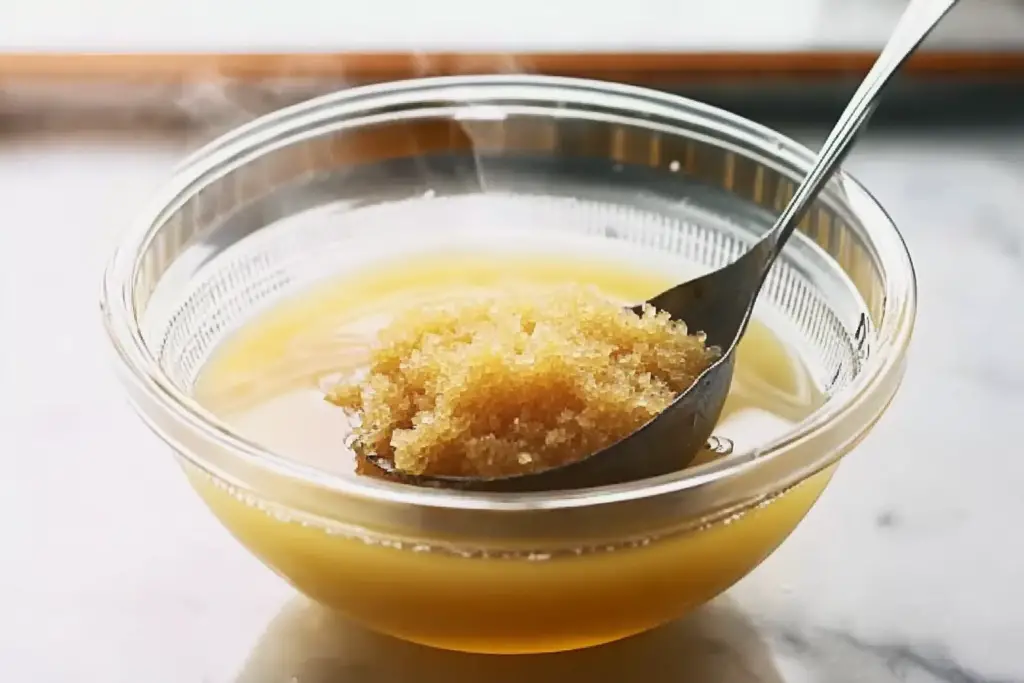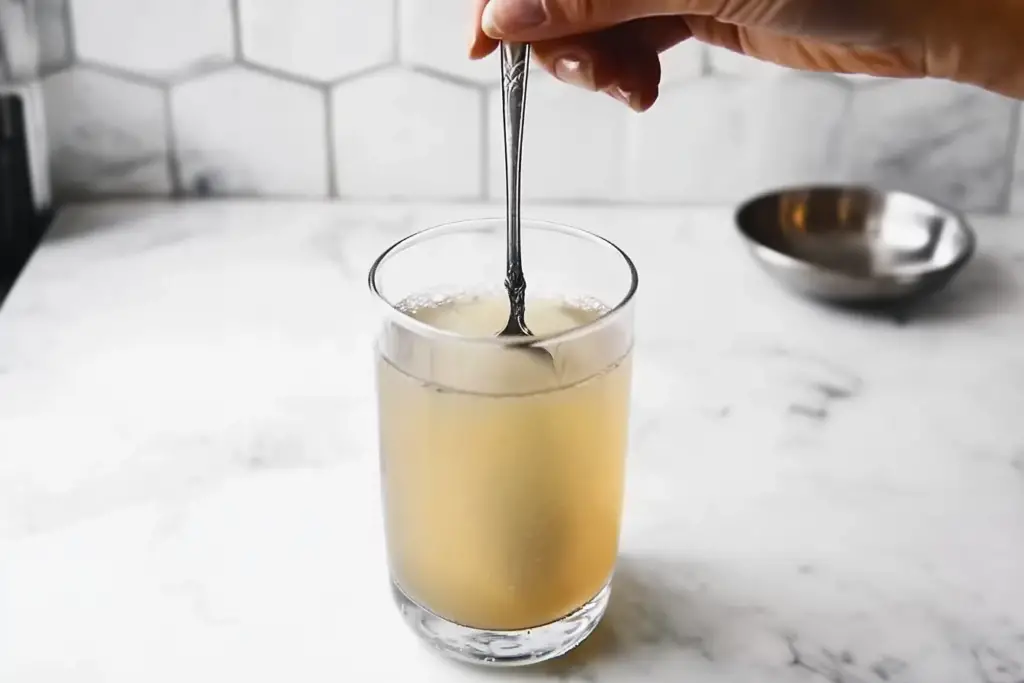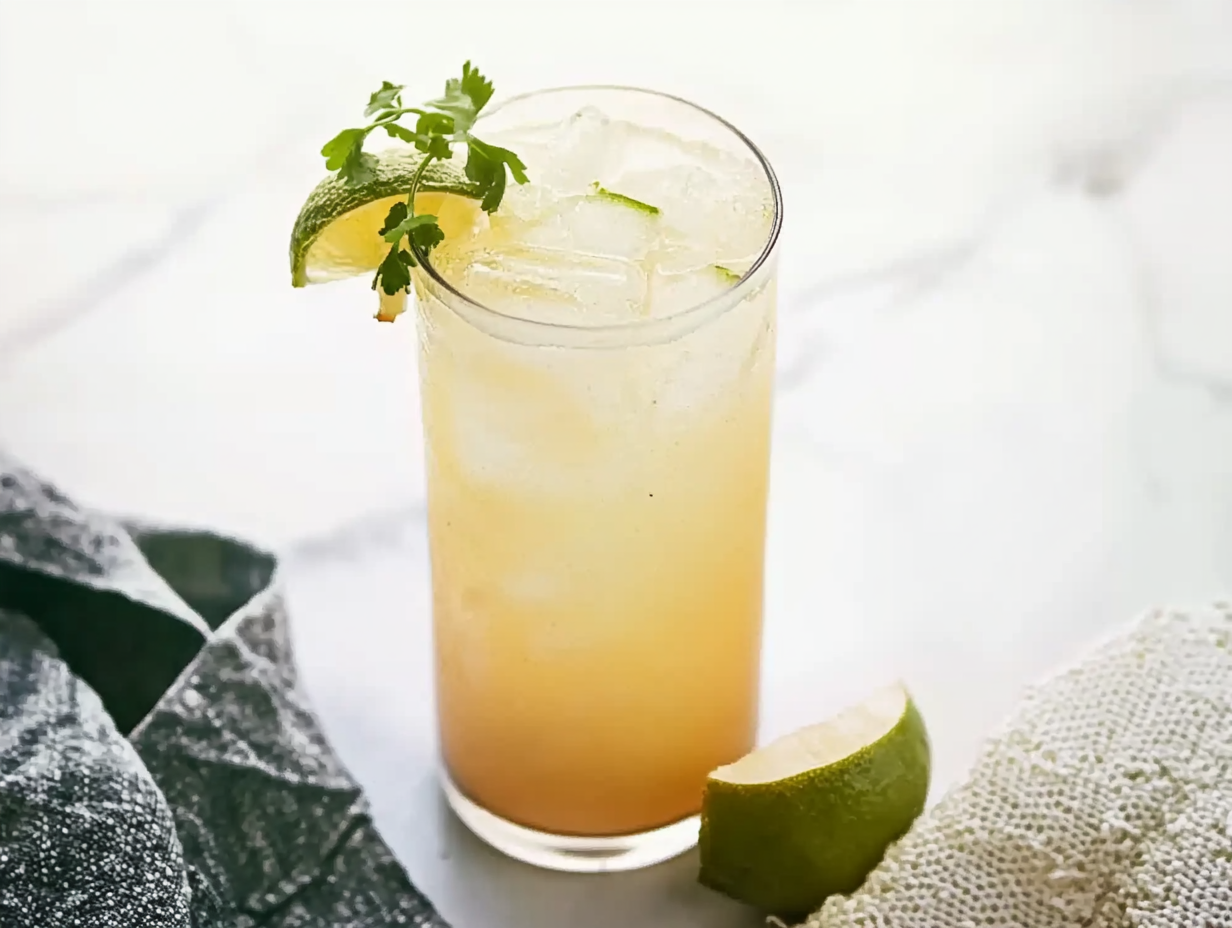Table of Contents
What Is Ginger Ale?
Ginger ale is a refreshing and widely loved carbonated soft drink flavored with ginger. It can be enjoyed on its own or as a mixer in cocktails and mocktails. Beyond its effervescent appeal, ginger ale has a rich history and a surprising array of benefits, making it a staple in households around the world.
The Origins of Ginger Ale
The story of ginger ale begins in the 19th century when pharmacists and beverage makers sought to combine the medicinal qualities of ginger with the rising popularity of carbonated drinks. The earliest form of ginger ale, created in Ireland, was not the sweet, bubbly beverage we know today but a more robust and spicy concoction.
The modern iteration of ginger ale is credited to John McLaughlin, a Canadian chemist and pharmacist who introduced “Canada Dry” in 1904. This beverage gained worldwide recognition for its milder flavor and distinct carbonation, revolutionizing the drink and establishing ginger ale as we know it today.
Traditional vs. Modern Ginger Ale
Traditional Ginger Ale:
- Historically, ginger ale was brewed using natural fermentation methods, which imparted a strong, spicy flavor and a slightly alcoholic content. The process relied on the natural properties of ginger and yeast.
Modern Ginger Ale:
- Today’s ginger ale is usually non alcoholic and produced by combining carbonated water, ginger extract, and sweeteners. It is available in two main types: the “dry” variety, characterized by a crisp and subtle ginger flavor, and the “golden” variety, which has a more robust taste and is less common.
How Ginger Ale Is Made
Natural Ingredients in Ginger Ale
Ginger ale primarily consists of the following ingredients:
- Ginger Root: The key flavor component, known for its anti inflammatory and digestive benefits.
- Sweeteners: Cane sugar, high fructose corn syrup, or natural alternatives like stevia.
- Carbonated Water: Provides the characteristic fizz.
- Natural Flavorings and Preservatives: Enhance taste and shelf life.
Fermentation vs. Carbonation
There are two main methods of making ginger ale:
- Fermentation:
- Traditional ginger ale involves fermenting ginger, sugar, water, and sometimes lemon juice with a ginger bug (a natural starter culture). This process creates a complex flavor profile and a small amount of natural carbonation.
- Carbonation:
- Modern ginger ale skips fermentation and uses carbon dioxide to add bubbles. This faster method makes mass production easier and keeps the flavor consistent
Health Benefits of Ginger Ale
Ginger ale isn’t just tasty and refreshing; it also boosts health, thanks to ginger. This simple root, used for centuries in traditional medicine, is full of nutrients and active compounds that support well being.
Digestive Support
One of the most well known benefits of ginger ale is its ability to aid digestion. Ginger contains compounds like gingerol and shogaol, which help:
- Relieve Nausea: Ginger ale is often used to alleviate nausea caused by motion sickness, pregnancy (morning sickness), or chemotherapy.
- Soothe Stomach Discomfort: It can help reduce bloating, gas, and indigestion by relaxing the gastrointestinal muscles and promoting healthy digestion.
- Stimulate Appetite: For those experiencing appetite loss, ginger ale can act as a gentle stimulant.
Anti-Inflammatory Properties
Ginger, the main ingredient in ginger ale, naturally fights inflammation. Its active compounds, like gingerol, can:
- Reduce Joint Pain: Regular consumption may help alleviate pain associated with arthritis and other inflammatory conditions.
- Support Recovery from Inflammation: Ginger ale can be a soothing choice during colds or fevers, as ginger helps to reduce inflammation in the throat and nasal passages.
- Improve Circulation: Anti-inflammatory properties improve blood flow, promoting cardiovascular health.
Antioxidants in Ginger Ale
Ginger is rich in antioxidants, which help the body combat oxidative stress caused by free radicals. This can lead to:
- Boosted Immunity: Antioxidants strengthen the immune system, helping the body fend off infections and illnesses.
- Healthy Aging: Antioxidants play a role in reducing the effects of aging on the skin and body by protecting cells from damage.
- Cancer Prevention: Some studies suggest that the antioxidants in ginger may help reduce the risk of certain cancers by inhibiting the growth of abnormal cells.
Popular Uses of Ginger Ale
Ginger ale does more than refresh—it’s a versatile drink with many uses. Its distinct flavor and health benefits make it popular at parties and as a go-to home remedy.
As a Mixer in Cocktails
Ginger ale is a popular choice as a mixer in cocktails, thanks to its balanced sweetness and subtle ginger flavor. It pairs well with a variety of spirits, adding depth and a sparkling finish to drinks. Some classic and creative uses include:
- Whiskey Ginger: A simple mix of ginger ale and whiskey, this cocktail highlights the spicy undertones of both ingredients.
- Moscow Mule Alternative: While traditionally made with ginger beer, a lighter version of the Moscow Mule can be crafted with ginger ale, vodka, and lime.
- Rum and Ginger: The combination of dark or spiced rum with ginger ale creates a warm, comforting drink.
- Non-Alcoholic Mocktails: Ginger ale is also a fantastic base for mocktails, adding effervescence and flavor without alcohol.

Home Remedies with Ginger Ale
For generations, ginger ale has been used as a home remedy for various ailments. While modern variations may differ in their effectiveness depending on the presence of real ginger, it remains a go-to option for many:
- Nausea Relief: Sipping ginger ale can help alleviate nausea and motion sickness, making it a common choice for long journeys or upset stomachs.
- Cold and Flu Symptoms: Warm ginger ale (lightly heated) is sometimes used to soothe sore throats and relieve nasal congestion, mimicking the benefits of ginger tea.
- Digestive Aid: Drinking ginger ale after a heavy meal can help ease bloating and indigestion by stimulating digestive enzymes.
- Hydration During Illness: The mild flavor and carbonation make ginger ale a comforting choice for staying hydrated during periods of illness, especially for those with sensitive stomachs.
The Ginger Ale Market
The ginger ale market is as diverse as its consumers, ranging from globally recognized brands to local craft producers. Whether it’s the iconic labels that dominate grocery store shelves or the artisanal small batch options favored by connoisseurs, the ginger ale industry offers something for everyone.
Top Brands Worldwide
Some of the most popular ginger ale brands have achieved global recognition, thanks to their consistency, availability, and wide appeal. These brands often offer variations in flavor and sweetness to cater to different preferences:
- Canada Dry: Known as the pioneer of modern ginger ale, Canada Dry remains one of the most recognized brands globally. Its mild “dry” flavor and crisp carbonation make it a favorite for drinking on its own or mixing with cocktails.
- Schweppes: A close competitor to Canada Dry, Schweppes offers a range of ginger ale varieties, including original, diet, and flavored options. It is celebrated for its robust and effervescent taste.
- Seagram’s: A classic choice for ginger ale lovers, Seagram’s is often highlighted for its balanced flavor and affordability.
- Fever-Tree: A premium brand offering artisanal ginger ale, Fever-Tree uses natural ingredients like fresh ginger root for an authentic taste, often preferred by cocktail enthusiasts.
These brands dominate the global market, thanks to their widespread distribution and consistent quality.
Craft and Small-Batch Producers
In recent years, there has been a surge in demand for craft and small batch ginger ale, reflecting a growing consumer interest in artisanal and health conscious beverages. These producers focus on quality, unique flavors, and traditional production methods:
- Bruce Cost Ginger Ale: Made with unfiltered, fresh ginger and real cane sugar, Bruce Cost offers a cloudy and authentic ginger ale that appeals to purists.
- Reed’s Ginger Ale: This brand specializes in natural, handcrafted ginger ales with bold flavors and spicy undertones. Reed’s also offers a variety of ginger-forward sodas for health-conscious consumers.
- Maine Root: Known for its organic and fair-trade ingredients, Maine Root delivers a ginger ale that combines sustainability with exceptional taste.
- Q Mixers: This boutique brand offers a lighter, less sweet ginger ale designed specifically as a mixer for cocktails, focusing on enhancing the flavors of premium spirits.
How to Make Ginger Ale at Home
Making ginger ale at home is a fun and rewarding process that allows you to control the ingredients and tailor the flavor to your liking. Whether you prefer a classic spicy kick or a milder, sweeter version, homemade ginger ale is a great alternative to store-bought options.
Equipment and Ingredients Needed
Equipment:
- Medium-sized saucepan
- Fine mesh strainer or cheesecloth
- Measuring cups and spoons
- Wooden spoon or spatula
- Clean glass bottle or jar with a lid
- Funnel (optional)
Ingredients:
- 1 cup fresh ginger root (peeled and finely chopped or grated)
- 1 cup granulated sugar (or a natural sweetener like honey or agave syrup)
- 2 cups water
- 1/2 cup freshly squeezed lemon or lime juice (optional, for a citrus twist)
- 1/4 teaspoon active dry yeast (if fermenting for natural carbonation)
- 4 cups cold water
- Ice and sparkling water (if skipping fermentation)
Step-by-Step Recipe
- Prepare the Ginger Syrup:
- In a medium saucepan, combine the chopped ginger, sugar, and 2 cups of water.
- Bring the mixture to a boil over medium heat, then reduce to a simmer.
- Let it simmer for 10–15 minutes until the sugar is dissolved and the ginger flavor is infused.
- Remove from heat and let it cool to room temperature.
- Strain the Syrup:
- Using a fine mesh strainer or cheesecloth, strain the syrup into a bowl or jar to remove the ginger solids.
- If desired, stir in the lemon or lime juice for added citrus flavor.
- Carbonate the Ginger Ale (Optional):
- If you prefer natural carbonation, mix the ginger syrup with the active dry yeast and 4 cups of cold water.
- Pour the mixture into a clean glass bottle or jar, leaving some space at the top to accommodate expansion.
- Seal the bottle tightly and let it sit at room temperature for 24–48 hours. Check regularly to ensure the carbonation is to your liking.
- Chill and Serve:
- Once carbonated, refrigerate the bottle to stop the fermentation process.
- To serve, pour the ginger ale over ice and enjoy. If you skipped the fermentation step, simply mix the ginger syrup with sparkling water to your desired level of sweetness and fizz.
- Store Leftovers:
- Keep any remaining ginger ale or syrup in the refrigerator. Homemade ginger ale is best consumed within a week for optimal freshness.

For those who enjoy experimenting with unique beverage pairings, consider trying this guide to the best Caipirinha recipe, as its citrusy zest complements the refreshing taste of ginger ale. If you’re looking to expand your culinary repertoire, the ultimate smoked chili recipe guide could inspire you to use ginger ale as a surprising flavor enhancer. And for a sweet twist, why not pair your homemade ginger ale with this long john donut recipe for a delightful snack combination?
FAQs About Ginger Ale
Is Ginger Ale Good for You?
Ginger ale can be good for you, depending on its ingredients. Ginger, the primary flavoring, offers health benefits like reducing nausea, aiding digestion, and providing anti inflammatory properties. However, many commercial ginger ales are high in sugar and may contain artificial flavors, which reduce their health value. Opting for natural or homemade versions can provide more benefits.
Is Homemade Ginger Ale Good for You?
Yes, homemade ginger ale is usually healthier than store bought versions. You can use fresh ginger and control the sugar or sweetener. Without artificial additives, it’s a more natural and nutritious option. Plus, homemade ginger ale keeps more of ginger’s health benefits, like its anti inflammatory and antioxidant properties.
What Two Sodas Make Ginger Ale?
If you’re looking to replicate ginger ale by mixing sodas, combining lemon-lime soda (like Sprite or 7-Up) with a splash of cola can approximate its flavor. However, this mixture lacks the authentic ginger taste and health benefits found in real ginger ale.
How Is Ginger Ale Made?
People make ginger ale by mixing ginger-flavored syrup with carbonated water. The process has two main methods:
- Modern (Non-Fermented): Mix a syrup made of ginger, sugar, and water with sparkling water for immediate consumption.
- Traditional (Fermented): Combine the syrup with yeast and water, allowing it to ferment for natural carbonation, which results in a more robust flavor and slight fizz.
Does Homemade Ginger Ale Have Alcohol?
Homemade ginger ale made through fermentation may contain trace amounts of alcohol (typically less than 0.5%) as a byproduct of the yeast converting sugars into carbon dioxide. This level is generally considered non-alcoholic. If you prefer an alcohol-free version, you can skip the fermentation process and use sparkling water for carbonation instead.
Conclusion
Ginger ale is more than just a refreshing beverage—it’s a drink steeped in history, versatility, and health benefits. From its origins as a medicinal tonic to its evolution into a global favorite, ginger ale has earned its place as both a comfort drink and a creative mixer.
Whether you choose a classic brand, explore artisanal small-batch options, or make your own at home, ginger ale offers a unique blend of flavor and functionality. It’s beloved for its ability to soothe the stomach, reduce inflammation, and add sparkle to cocktails and mocktails alike.
With its variety of uses, customizable recipes, and potential health benefits, ginger ale continues to charm enthusiasts around the world. Its enduring appeal proves that this fizzy, ginger-infused drink is not only a timeless favorite but also a testament to the versatility and goodness of nature’s ingredients.

